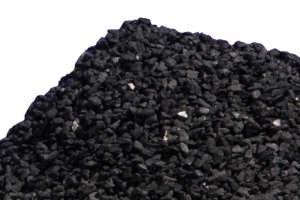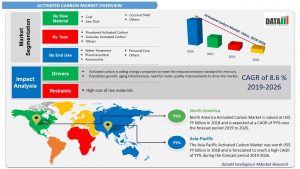Activated Carbon (also called activated charcoal, activated coal or active carbon) is a very useful adsorbent. Due to their high surface area, pore structure (micro, meso and macro), and high degree of surface reactivity, activated carbon can be used to purify, dechlorinate, deodorize and decolorize both liquid and vapor applications. Moreover, activated carbons are economical adsorbents for many industries such as water purification, food grade products, cosmetology, automotive applications, industrial gas purification, petroleum and precious metal recovery mainly for gold. The base materials for activated carbons are coconut shell, coal or wood.

Related projects:- Activated carbon, Granular Activated Carbon (GAC), Activated Carbon, Activated Carbon Powder, Powdered Activated carbon (PAC), activated charcoal, activated coal, Activated Fuller Earth, Pelleted activated carbon (EAC), Impregnated carbon, Polymers coated
Superheating natural sources of carbon, such as wood, produces activated charcoal. The black powder stops toxins from being absorbed in the stomach by binding to them. The body is unable to absorb charcoal, and so the toxins that bind to the charcoal leave the body in the feces. Activated charcoal is not the same substance as that found in charcoal bricks or burnt pieces of food.
The manufacture of activated charcoal makes it extremely adsorbent, allowing it to bind to molecules, ions, or atoms. In this way, it removes these from dissolved substances. Making activated charcoal involves heating carbon-rich materials, such as wood, peat, coconut shells, or sawdust, to very high temperatures.
Related Videos:- Chemicals (Organic, Inorganic, Industrial)
Activated Carbon: Global Demand, Growth Analysis & Opportunity
· The global activated carbon market was valued at USD 4.7 billion in 2015 and is projected to reach USD 8.1 billion by 2021, at a CAGR of 9.4% from 2016 to 2021. The market size in terms of volume was 2,743.4 KT in 2015 and is projected to reach 5,424.9 KT, by 2021, at a CAGR of 8.4% from 2016 to 2021. The growing use of activated carbon in industrial applications has led to increase its share in the gas phase applications, which is driving the activated carbon market in the Asia-Pacific region. Moreover, the growing use of activated carbon for soil remediation applications as well as in pharmaceutical applications have witnessed significant growth during the last five years is further expected to boost the growth of the activated carbon market. However, scarcity of raw material especially in Asia-Pacific is major factor restraining the growth of the activated carbon market globally.
Related Books:- BOOKS AND DATABASE
· The Asia-Pacific region is the fastest-growing market for activated carbon, in terms of value and volume. Increasing investments by companies, especially in automotive sector, the growing shift of production facilities to the emerging economies of the region; the strong industrial base, are the major factors contributing to the growth of the activated carbon market in this region.

· The high demand for activated carbon (AC) is anticipated to grow due to the demand in mercury control technology for industrial air purification applications. Over the next several years, many production facilities U.S. and Europe including coal-fired power plants, clinker cement plants, and other facilities operating large industrial boilers will be required to meet stringent new emissions standards for mercury and other hazardous air pollutants overseen by the U.S. Environmental Protection Agency (EPA) and EPA has set Maximum Achievable Control Technology (MACT) standards which require sources to meet specific emission limits that are based on the emission levels already achieved by the best-performing similar facilities.
Conclusion:
The project report by NPCS on Activated carbon is very valuable it gives detailed information about the market potential, characteristics of the products and the forecasted growth about the product. All the information provided in the project reports have been taken from the reliable resources. The scope of the report includes assessing market potential, negotiating with collaborators, investment decision making, corporate diversification planning etc. in a very planned manner by formulating detailed manufacturing techniques and forecasting financial aspects by estimating the cost of raw material, formulating the cash flow statement, projecting the balance sheet etc.